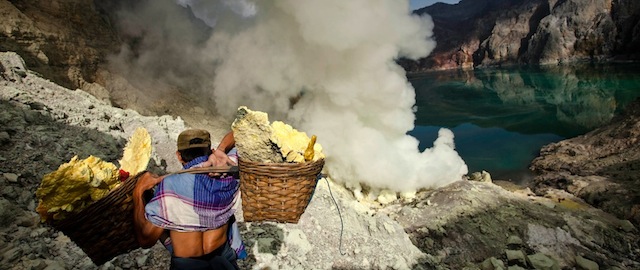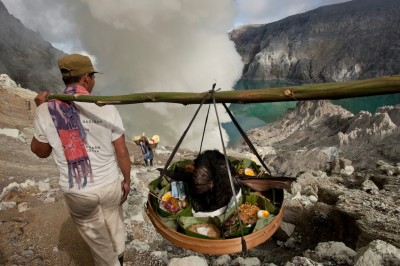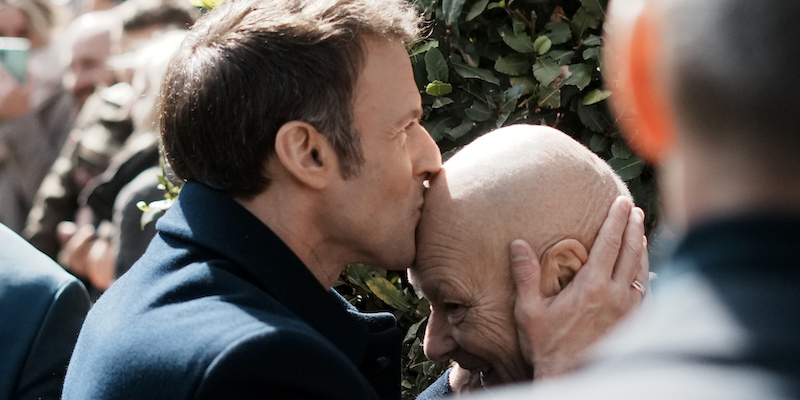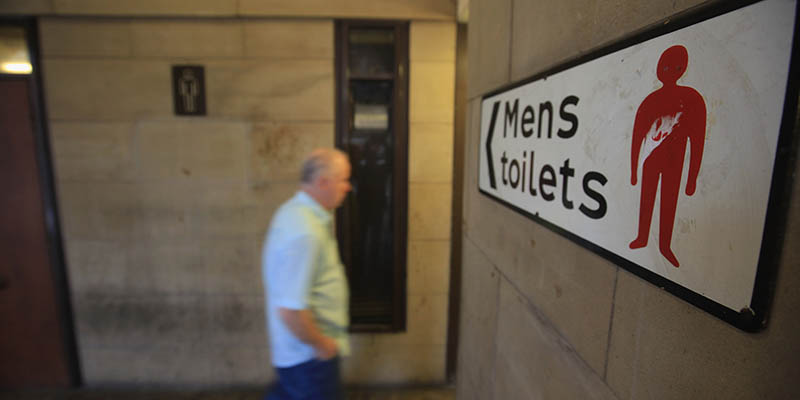Una miniera di zolfo a Giava
Un gran reportage fotografico tra minatori, tanto fumo, blocchi gialli e la testa di una capra offerta in un rito propiziatorio

altre
foto
Il fotografo di Getty Images Ulet Ifansasti ha realizzato un reportage fotografico nelle miniere di zolfo del vulcano Ijen, nella provincia di Yogyakarta a Giava, in Indonesia. Le foto mostrano i minatori al lavoro: si servono di pali per facilitare la fuoriuscita dello zolfo, e trasportano blocchi pesanti fino a 90 chili. Le immagini mostrano anche un cerimonia che si tiene ogni anno in cui i minatori gettano nel cratere del vulcano la testa di una capra sgozzata, offerta per scongiurare disastri nell’anno successivo.
L’estrazione di zolfo è una delle principali attività della zona, ma è un lavoro particolarmente rischioso per l’acidità dell’acqua del cratere che può sciogliere i vestiti e causa numerosi problemi respiratori. Inoltre i minatori usano spesso protezioni e precauzioni insufficienti che potrebbero comprometterne la salute. Sono pagati a peso e – secondo dati del settembre 2010 – ogni giorno ricevono una paga equivalente a 13 dollari americani.




















